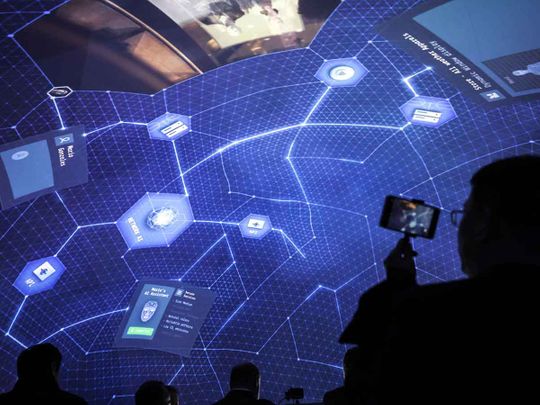
The world is descending on Dubai for the Gitex - you can bet that most of the conversations will center around how Artificial Intelligence - or more specifically, Generative AI - can be embedded in all aspects of our lives. And why not?
No other technology in the recent past has captured the collective imagination of humanity as comprehensively as Gen AI has in the last 10 months.
Yet, AI, and even Gen AI, is not a new phenomenon. Still, when ChatGPT launched its intuitive user interface last November, everyone could, for the first time, directly experience the power and productivity it could enable. Within weeks, schoolchildren were using it to get through homework; corporate professionals were writing emails and reports; and designers were exploring text-to-image and video capabilities.
This was the magical honeymoon period for Gen AI when it seemed there were no limits on how it could be used. Today, individual users are experimenting with and finding more and more ways to use Gen AI to become more creative, innovative, and productive.
Today, individual users are experimenting with and finding more and more ways to use Gen AI to become more creative, innovative, and productive.
A tad different with enterprise adoption
But when it comes to institutional adoption by enterprises the story is playing out just a little differently.
The beginning was quite similar when maverick leaders in different organizations mandated experiments to see how Gen AI could be used for business functions. Some specific use cases were identified where it could completely disrupt existing workflows.
Early business use cases
Marketing and promotion, for example, was one of the first functions that saw significant Gen AI success. It was now possible to feed a communication brief into one of the Gen AI applications and see several options for creatives developed nearly instantaneously.
No need to engage an agency, explain the brief, run through multiple review cycles, and finally get the creative output in weeks… or even months. Customer service became another area where Gen AI seemed to be particularly successful.
Some companies experimented with involving Gen AI-based chatbots during periods of high volume of incoming customer inquiries. No need to rapidly hire customer representatives and then manage training and attrition. In fact, a global online cosmetics retailer has completely replaced its entire IT support service desk with a Gen AI application.
HR was another area of success where recruiters started using Gen AI for writing effective job descriptions and for developing candidate outreach mailers.
Bolstered by these successes, CEOs and boards of directors got involved in the next phase. Their goal - to achieve the Holy Grail of using Gen AI for core business functions. That is, to develop the primary products and services the organization provides to its customers. This is most sensitive as any problems here can immediately impact revenues, reputation, and competitive advantage.
‘Create’ facts
As these funded trials began, a few things became apparent – Gen AI applications cannot, by definition, be predictable and consistent. And there is a tendency to ‘create’ facts. These are both critical shortcomings when it comes to addressing the needs of enterprises.
Customers rely on enterprises to provide them with consistent, predictable, and accurate products and services. These initial findings put the first real brake on the adoption of Gen AI by enterprises. There is more wariness about using it without a human-in-the-loop.
The other issue that has emerged is that enterprises have now understood the importance of data and aware that it can be the source of competitive advantage. Most Gen AI models rely on the availability of vast tracts of training data being easily available.
But as enterprises become more circumspect about allowing their data to be used for training Gen AI models, the cost and time for model tuning is becoming challenging. Due to this, momentum is gathering around the practice of enterprises using more targeted models and training them only on internal data.
This could be the next wave of Gen AI adoption by enterprises.
Gen AI is a rapidly evolving technology, with new models and applications being announced nearly weekly. It is also an evolving regulatory environment with several governments drafting governing legislation. With the vibrant ecosystem around this technology and the tremendous market interest, the issues are expected to be solved in the next few months and years.
Gen AI is a once-in-a-generation technology that has the potential to truly transform the way we live and work. It can free humanity from most mundane tasks and allow it to focus on the true source of joy – being creative and innovative.
Gen AI is still at its initial stage of maturity, and perhaps the cautious approach that enterprises are taking toward it portends well for its long-term maturity and adoption.









